Keeping Your Cigars Fresh
While smoking a cigar is a rewarding experience, some preparation is in order to make sure your cigars are ready to smoke. And to keep your cigars in tip-top shape, they need to be kept as fresh as possible at all times. To do that, you need to have a proper storage unit for your cigars. After all, why invest in a top-drawer, hand-rolled cigar only to have it dry out on you – making it impossible to smoke, or leaving you with a mouthful of bitterness? Conversely, a cigar that’s swollen with humidity, making it difficult to get a decent draw, or may even have the wrapper burst from the buildup of heat inside. In either case, the pure pleasure of smoking a cigar is lost.
Cigar tobacco is humidity-sensitive. It can both absorb and release moisture from the surrounding air. In a dry environment, a cigar can also lose its essential oils and flavor. Many cigar smokers cite the “70/70 Rule” as ideal: 70% relative humidity (RH), 70 degrees Fahrenheit temperature. Other aficionados prefer a slightly lower humidity level, closer to 67%, for a slightly drier smoke – while a slightly higher level, closer to 73%, makes for a more supple cigar. Whether you like 67%, 70% or 73% humidity, by maintaining a level within the range of 65% – 75% RH along with an average temperature of 70 degrees, your cigars will keep and age well and maintain their factory-fresh bouquet.
So how do you best store your cigars to protect them? Get a handcrafted wooden humidor.
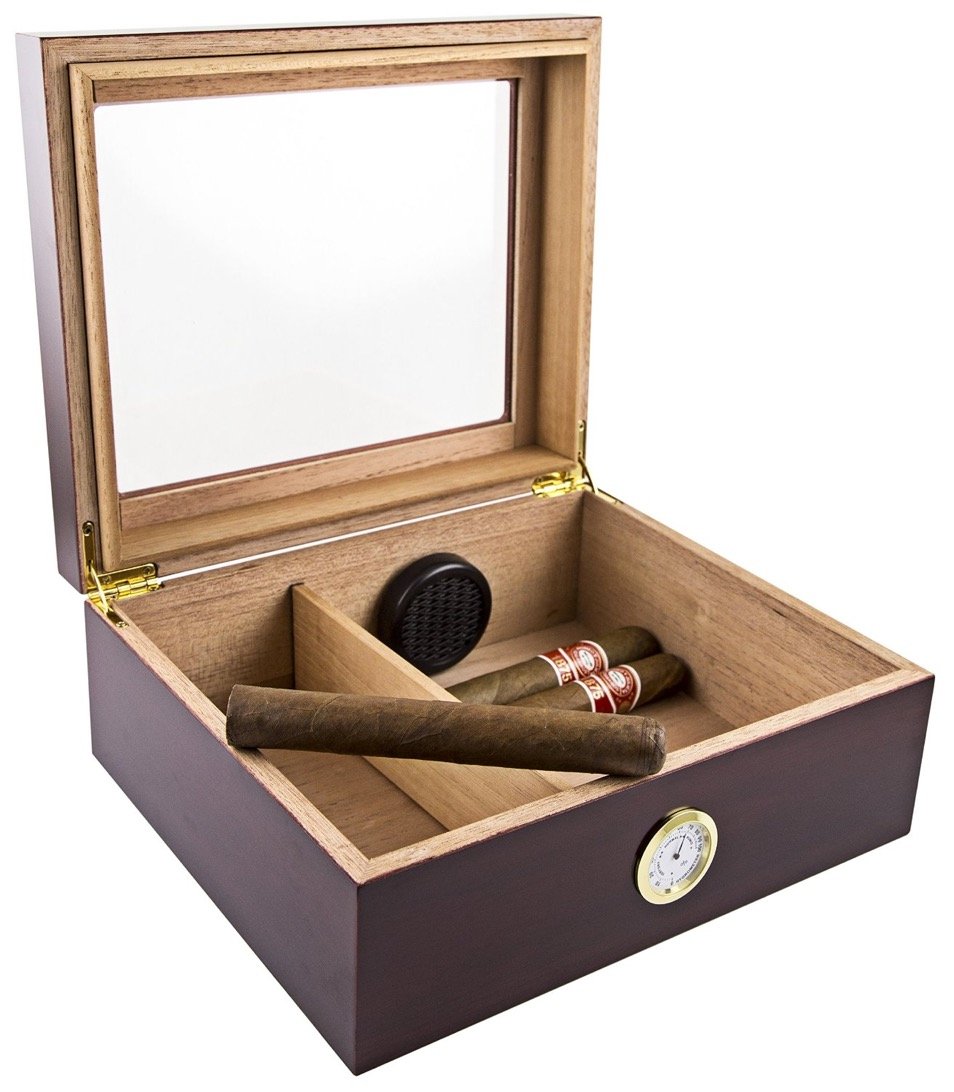
Where the Cigars Call Home
A humidor is the traditional container in which almost all avid cigar smokers store their cigars. With the right equipment (see below), your humidor will maintain the proper relative humidity and temperature. There is a virtually limitless variety of humidors available ranging from very economical to very expensive, from travel size to tabletop, from end table and even to tall cabinet models. Following are two key components to look for when purchasing a humidor:
-
A Good Seal
This is the most important part of a humidor. If it doesn’t seal well, the humidity will escape, and your cigars will dry out. For desktop models, you should hear a slight whoosh of air when you drop the lid from at least the halfway open height. You can also test the seal by placing a dollar bill half in, half out of the humidor, then close the lid. Now, try to tug the bill out. If the seal is good, the bill will drag the humidor several inches. If the bill slips out easily, the seal is not as tight as it should be.
-
Spanish Cedar
Regardless of what material the outside of the humidor is made of, the inside should be lined entirely with Spanish cedar. This fragrant wood works well in humid conditions because it absorbs moisture and retains it without warping. Moreover, it won’t impart negative flavors or aromas on the cigars – you want the flavor of the cigar not the container. Spanish cedar is also resistant to cigar beetles (a.k.a. tobacco beetles); that’s essential, as an infestation of cigar beetles can destroy your collection. Although it’s extremely rare, beetles can hatch in your cigars, but they won’t get into the wood.
Bigger is Better - Here’s Why
It’s recommended you buy a humidor that is somewhat bigger then the number of cigars you pan to store inside of it, and here’s why: First, you need enough headroom to compensate for the hygrometer and humidifier, or other humidification devices that may require placement either underneath the lid, or inside the humidor. Second, you need room for air circulation. So, if your collection at the time of your humidor purchase is 40 – 50 cigars, consider a humidor that holds at least 75 cigars. This will allow air to circulate around the inside of the humidor, keeping your cigars more evenly humidified. Keep in mind wider ring gauge cigars, like Robustos, Toros and Churchills will take up more room than thinner ring gauge cigars, like Coronas, Lonsdales and Lanceros. Finally, once you really get into premium cigars, you may find your collection growing faster than you imagined, so you’ll already have the extra space to accommodate them.
Location, Location, Location
Where should you place your humidor in your home or office? It should be away from a window or glass door since direct sunlight can cause heat to build-up in the box. Even lamplight can increase the temperature, so don’t place your humidor directly under a light, either. If you live in a region where you experience cold winters, keep the humidor away from windows or doors. Drafts of cold, dry air may find their way into the humidor and lower the humidity inside. Put the humidor in a place that’s cool (but not cold), somewhat shady, and where it won’t be disturbed. Avoid using it to prop up another object, and don’t set drinks or other objects on top of it. Keep in mind that a good humidor is also a fine piece of furniture.
Before you put your precious primos in your humidor, it needs to be seasoned. This process makes sure the relative humidity inside is at the correct level from the beginning so your cigars enter an ideal storage environment. For a step-by-step guide on how to properly season a humidor, watch this video:

How to Season a Humidor
Before putting cigars into your new humidor it is important that you season your humidor first. In this video find out why this is necessary, and how easily this can be done. [Get our Step-by-Step Humidor Seasoning Method]
How to Keep a Cigar Humidor Properly Humidified
If the humidor is your cigars’ home, then the humidifier is its virtual HVAC system. This is the device that provides the relative humidity (RH) your cigars need to thrive. Again, there several choices when it comes to humidifiers. Learn more about the different types of humidifiers from Crystal beads and Gel, to Boveda packs. Here’s a brief introduction to different types of humidifiers:
Click on a humidor part below to learn more

Green Oasis Foam
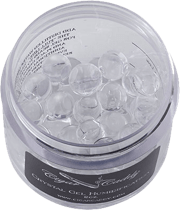
Crystal Beads
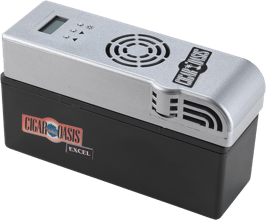
Electronic Humidifiers
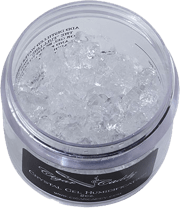
Gel
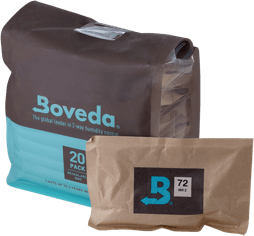
Humidity Packs or Humi-paks
Green Oasis Foam
Many traditional wooden humidors come with this kind of humidifier – green foam inside a plastic housing. Similar to the oasis sponge material used by florists, these devices are soaked in distilled water, which is released as the foam dries. It’s recommended to use a propylene glycol-water, or “50/50” mix the first time you fill the humidifier and to use the mix again only several times a year, say, every four months. Don’t use the mix every time you refill because it can clog green foam devices over time. While this type of humidifier is an inexpensive option, it’s not very accurate in terms of the amount of humidity it releases and may require frequent refilling. Also, because of its design, it can be prone to mold – something you don’t want near your cigars.
Crystal Beads
These devices are filled with polyglycol beads that absorb distilled water and expand until they appear like a clear, solid gel. Because of their chemical makeup, they not only hold much more water than oasis foam, but they can maintain a more constant 70% humidity as moisture is slowly released. When the solid substance starts to evaporate the beads will return to their original size, telling you it’s time to refill.
Electronic Humidifiers
Most often used for large humidors, electronic humidifiers are very accurate and low maintenance. Digital sensors monitor humidity levels and when those levels dip below the setting, a fan engages to release more moist air through a special cartridge. Most devices will also have a digital temperature reading so you’ll also be able to accurately monitor the temps inside your humidor. These humidifiers tend to be higher in price, and can take up a decent amount of space, which is why they are recommended for large cabinet or end table humidors, but they’re very efficient and reliable.
Gel
Like crystal beads, these humidifiers, often sold in glass jars, have a viscous polymer base that releases moisture at a certain relative humidity level. One advantage is that the moisture is released in an upward direction, however, some models can hog real estate in your humidor, which could be used for more cigars.
Humidity Packs or Humi-paks
The Boveda Packs or humi-paks as they are sometimes called are incredibly accurate and can be bought to achieve precise humidity. These packs have a patented “2-Way” system that both absorbs and releases moisture as required by the environment in the humidor and can last up to three months. They work extremely well in smaller humidors as well as those made out of non-wood materials, like acrylic, because they can touch the cigars without negatively affecting them. Water pillows puff up when soaked in distilled water. When they’ve reached maximum absorption, they’re placed in a special bag then go into the humidor. Water pillows will last about a month and, like the beads above, after they’ve shrunk, it’s easy to tell when they need to be soaked again. Additionally, both Boveda and water pillows are ideal for traveling with your cigars since they fit easily inside most travel cases.
Regardless of the type of humidifier you choose, remember this: NEVER USE ANYTHING OTHER THAN DISTILLED WATER in your humidifiers or humidors. Tap water, spring water, even filtered water may have other additives and/or minerals that will be released into your humidifier which can negatively affect the flavor of your cigars, or even worse, turn them moldy.
How long do cigars stay fresh in a humidor?
Under “ideal” conditions – the right humidity and temperature – cigars can stay fresh for decades. Note that drastic fluctuations in temperature and humidity will compromise a cigar’s freshness. If you’re not sure how fresh a cigar might be, examine it. The wrapper should appear slightly oily and the entire length of the cigar should have a bit of give when you gently pinch it at the head, foot and midsection. (The latter, more tactile approach is often the best way to tell if your cigar is really fresh.)
How often should I check the humidity?
Check the humidity levels regularly so you quickly notice any fluctuations. Once a week should be often enough, but if you’re still getting started with your humidor or using a new humidifier, consider checking it every few days. You can never be too certain that your humidor is operating the way it should.
How do I stack cigars in my humidor?
You may notice that boxed cigars are packed pretty tightly, but cigars need space to allow air circulation; don’t pack them into your humidor as they are in their factory boxes. The best method is to place the first layer of cigars in the base of the box allowing a little space between each cigar. For the next layer, place the cigars in the crevices between the cigars on the layer below, like you would set bowling pins. Alternate the layers flatly to leave ample room for your humidifier so that it doesn’t touch the cigars. Doing this also allows you to remove your cigars more easily and move them out of the way when looking for a cigar below.
How to Monitor the Conditions in Your Humidor
Maintaining the right humidity and temperature levels in your humidor might seem challenging at first, but once you get the hang of it, it’s like riding a bicycle. The hygrometer – an instrument that measures humidity – allow you to monitor the amount of moisture inside the humidor. Because of variations in hygrometer measurements, you might need to adjust the readings up or down. But once you learn the quirks of your hygrometer, you’ll have a better understanding of the conditions inside your humidor and what you need to adjust.
There are two types of hygrometers for humidors: analog and digital. The analog version is a mechanical device with a spring element that can adjust the needle with a small screwdriver. Some cigar smokers find analog units a bit inaccurate, since there can be a variance of up to 10% – but other cigar smokers like that the calibration can be adjusted. Moreover, some of the better-made analog models can be quite accurate.
Digital hygrometers are electronic and tend to read more accurately – often within one to two percent. One other advantage to digital models is that they include a temperature reading, so you get the best of both worlds. Some digital models will also offer calibration adjustment.
Before you can use any hygrometer, it should be calibrated. Watch this video to see how it’s done.

How to Calibrate a Hygrometer
So you purchased a humidor, seasoned it, and you are ready to load in your cigars. But before you do, it’s always a good idea to calibrate your hygrometer to make sure that the reading is accurate. [Watch Video on the Old-school Hygrometer Calibration Method]
Remember to keep the hygrometer a small distance from your humidifying device. If you place the hygrometer too close to the humidifier, it may give you higher humidity readings, and you could risk drying out your cigars trying to correct an inaccurate reading. Since most humidifiers reside in the center of the underside of the lid, the hygrometer should be placed near a corner of the lid, but not so close to prevent the humidor lid from closing.


